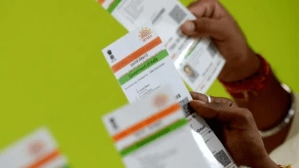The Rs 10,000-crore IndiaAI mission is set to take off with the government chalking out plans for creating a domestic foundational model on the lines of US and China. The ball has been set rolling with the allocation in the Budget with the tenders for procuring graphics processing units (GPUs) finalised.
In FY26, the ministry of electronics and IT(MeitY) has been allocated Rs 2,000 crore for IndiaAI mission, which is one-fifth of the total allocation. The increase in allocation is nearly four times higher than the budgetary allocation of Rs 552 crore in FY25.
The actual spends, however, for FY25 has been lower at Rs 173 crore as the government was preparing to empanel companies to bring in computing infrastructure in the country at subsidised cost.
Last week, the government announced the empanelment of companies that will bring in over 18,000 GPUs for startups, academia and researchers at affordable rates. The government will bear 40% of the bill for usage of these GPUs by the beneficiaries.
An increase in budgetary allocation has come at a time when China’s AI startup DeepSeek launched its foundational models at a significantly less cost compared to global peers like OpenAI, Gemini, etc. Further, the possibility of restrictions on exports by US on GPUs prompted the industry and experts to stress on the need for moving fast on developing sovereign AI plans.
With the Rs 2,000 crore, MeitY is targeting to set up 20 AI curation units at different central ministries, 80 IndiaAI labs across India, fund atleast 25 deep tech startups and three industry-led projects under the mission.
The government said the outcome of the allocation would be establishment of a comprehensive and integrated mission to advance the domestic AI ecosystem, to foster inclusion, innovation, and economic growth.
“The availability of subsidised GPU computing infrastructure and associated platform services will empower Indian startups and researchers to develop indigenous AI LLMs (large language models) reducing dependence on foreign AI technologies,” said Sunil Gupta, co-founder, managing director and CEO of Yotta Data.
A fast approach by MeitY on AI mission is positive for AI infrastructure and data centre providers as the same will increase the take-up of their solutions.
Sridhar Pinnapureddy, founder and CEO of CtrlS Datacenters said, “these initiatives will significantly increase demand for datacenter capacity and foster a thriving AI ecosystem”.
Semiconductors
Unlike the IndiaAI mission, the budgetary allocation for semiconductor projects-related disbursements has been kept flat at Rs 7,000 crore in FY26. For FY25, the government was estimated to spend Rs 6,903 crore.
However, owing to less disbursements the actual spend in FY25 for the semiconductor programme is lower at Rs 3,816 crore.
In December, the standing committee on Communications and IT had pulled up MeitY for surrendering more than half the funds allocated for semiconductor and display manufacturing projects in 2023-24.
The reason lower spends can be attributed to the inability of the beneficiary companies under the schemes to file claims.
Out of the Rs 7,000 crore allocation for semiconductor programme, Rs 3,900 crore has been allocated for already approved and new compound, assembly, testing, marking and packaging (ATMP) facilities. For setting semiconductor fabs project, the government has set aside Rs 2,500 crore for supporting one fab (already approved Tata fab likely), display fabs continue to get negligible allocation.
For modernisation of semiconductor laboratory (SCL) and design-linked scheme, the government has set aside Rs 400 crore and Rs 200 crore, respectively. Around Rs 900 crore was allocated for SCL modernisation in FY25. However, the actual spend was at Rs 11 crore.
Since no proposal for Display fab has been approved under the Modified Scheme for setting up of Display Fabs and considering the available funds out of the total outlay of the programme, it is anticipated that no approval may be granted, according to the outcome Budget 2025-26.
“The budget lacks clarity on ISM 2.0 (incentives beyond the $10 billion mark) and does not introduce a major PLI scheme for components or a dedicated product creation initiative as a growth driver,” said Ashok Chandak, president of India Electronics and Semiconductor Association (IESA).
According to Chandak, the same could potentially slow the pace of value addition in India’s electronics ecosystem.
For ATMP/OSAT units, the government is looking to support six projects including the four already approved of companies such as Tata, CG Power, Kaynes and Micron, during FY26.









